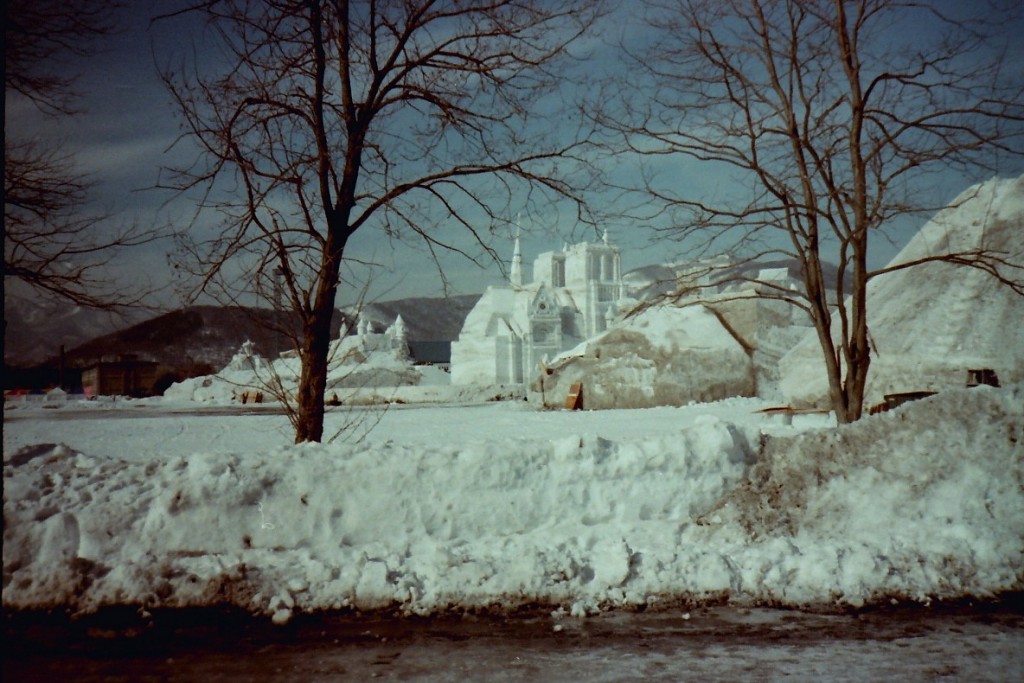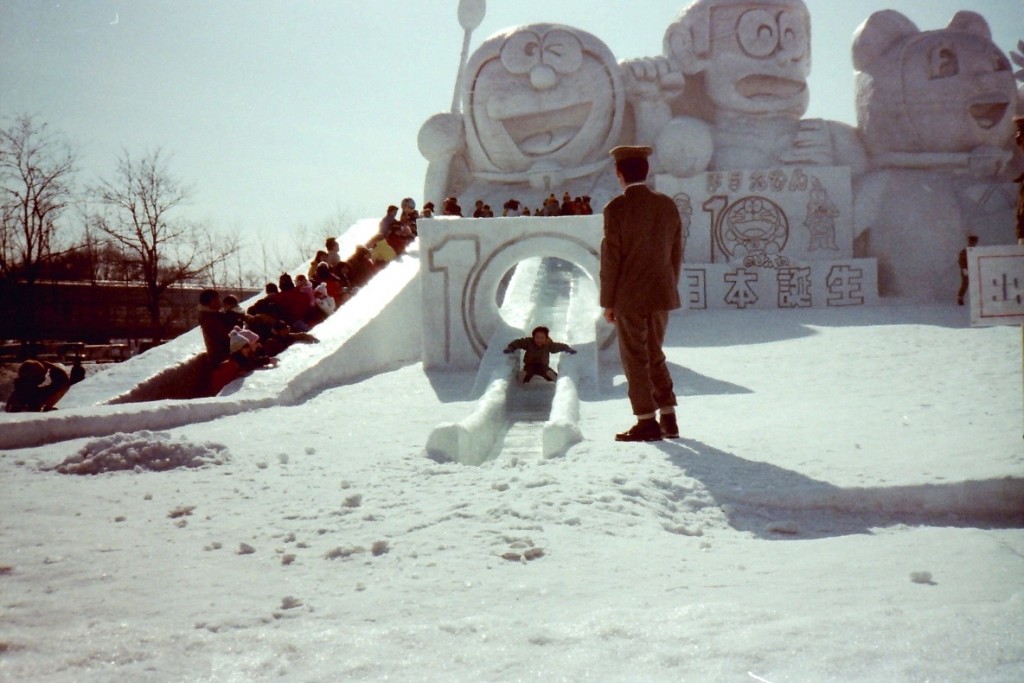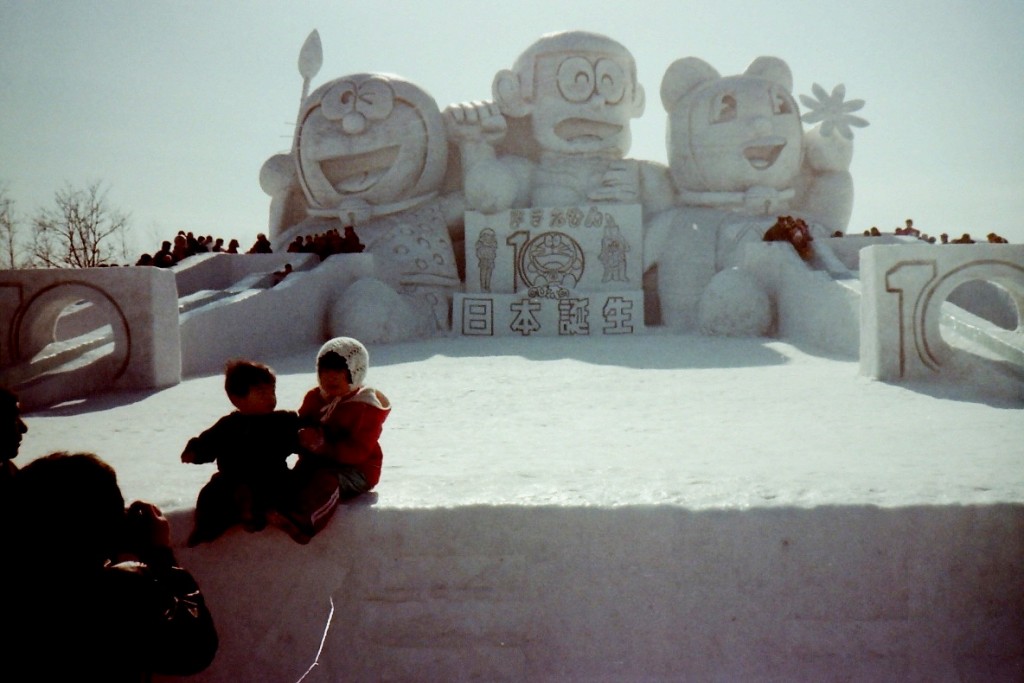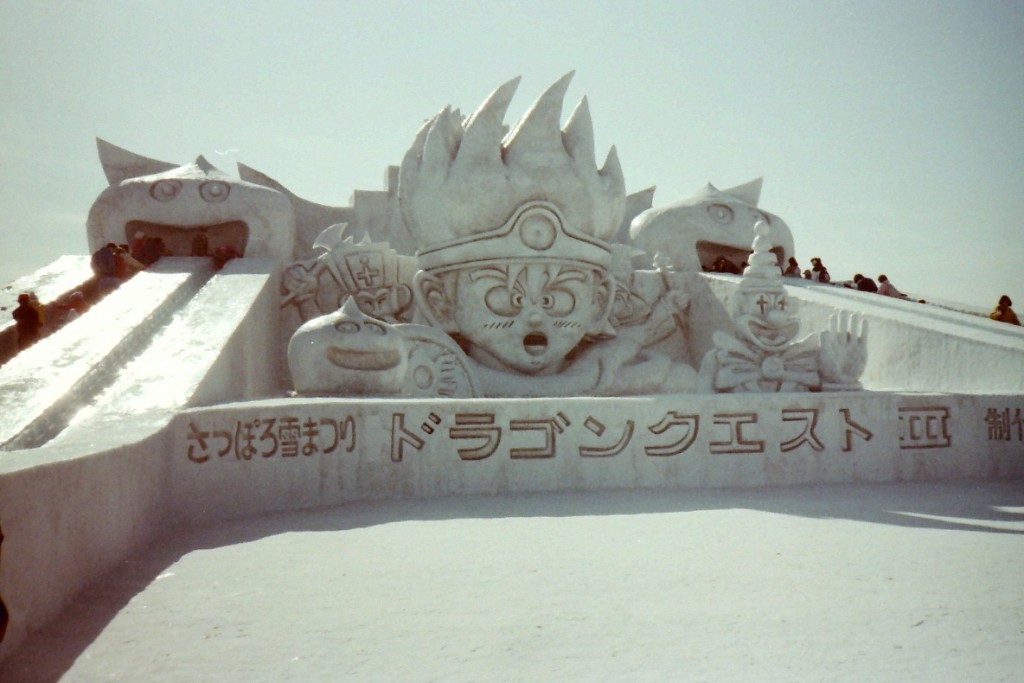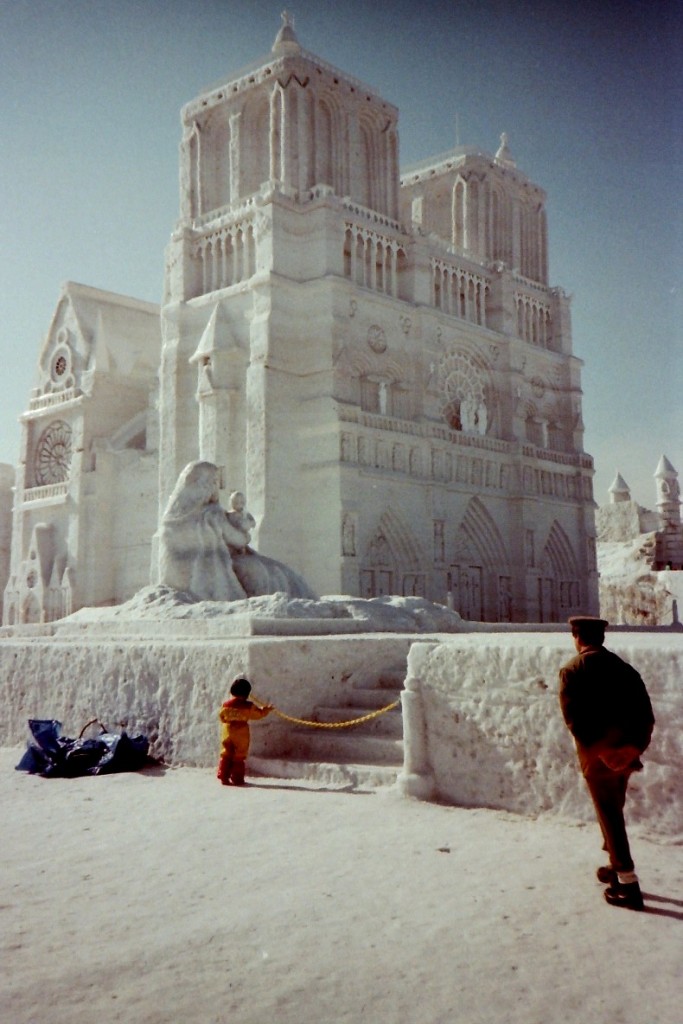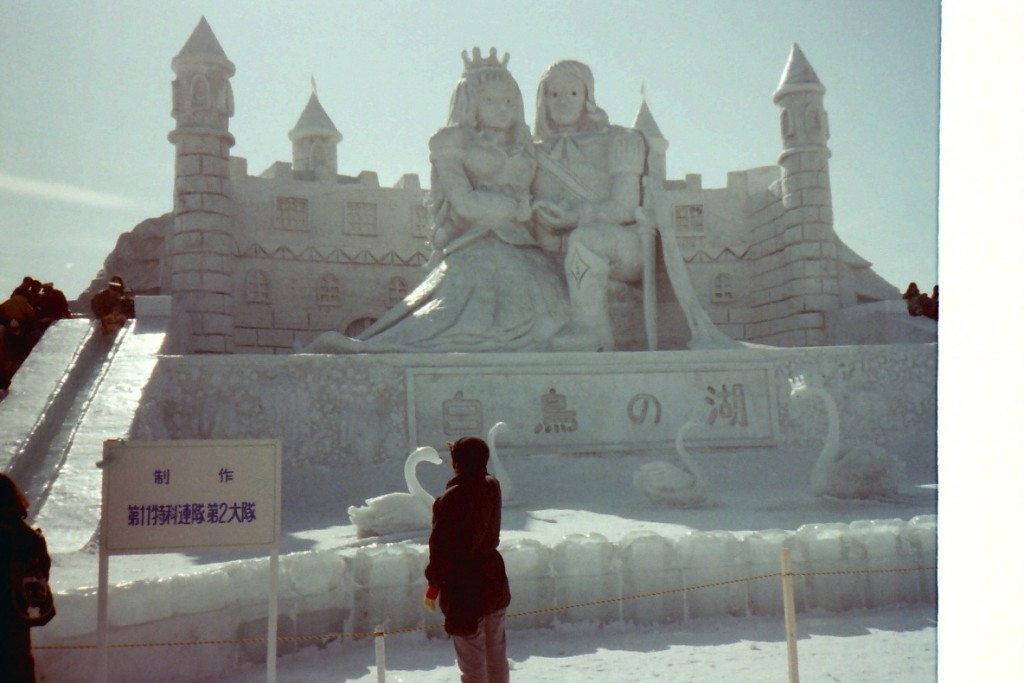I think I made a mistake when I decided not to resize the scans from my Japan negatives. The limit for WordPress is about two megabytes per photo, but that’s not a practical size. My negative/slide scanner saves files of just over one megabyte, but even that is too big.  When this page loads, it can take awhile to download all the images, even with a fast cable connection.
Sooooo, I have started downsizing my Japan photos for blog posting to 47% of their original weight. They still look pretty good at that size, and you will still be able to click them in the blog and see a slightly larger, more detailed image.
Here are a few pics of the Sapporo Snow Festival, in (of all places) Sapporo, Hokkaido, Japan. BTW, in Japan, they give addresses in a more logical way — from large to small, i.e., they give the city/town designation last.
It’s really difficult to discern scale from this shot, but that cathedral is bigger than you may think.
 We’re a little closer to the cathedral — beginning to see what I mean?
The bottom line of text on the side of the slide says, Sapporo Yuki Matsuri (meaning, “Sapporo Snow Festival,” only there are no capital letters in Japanese). I’m not positive of the translation of the top line, but it’s most likely something like, “Fortieth Annual.” That works out to the first festival taking place in 1950, if you do the math, and if they didn’t skip any years, like when there might have been too much snow. We’ll get a closer look at the cathedral later.Â
I probably would have loved it, too — about 25 years earlier. But one of the dudes from my office drove his dumpy derrierre down this delightful damp ramp. He looked like a damp fool — but he needed no help from sculpted snow to prove that.
I think these snow beasts must have been Saturday-morning cartoon heros.
This slide has a more serious, perhaps more violent manga theme. Notice the “flaming” hair and the creepy clown. The text says, Sapporo Yuki Matsuri Doragon Kuesto, with “doragon kuesto” being about as close as they’re going to get to “Dragon Quest.”
This cathedral looks hauntingly familiar, n’est ce pas? So-yo!
No, this isn’t Paris in a blizzard. We’ve finally gotten close enough to garner a good gander at the snow cathedral.  I think they said it was somewhere from 25% to 35% scale. That’s a LOT of snow! I don’t know how they get it piled up high enough, but they do use big trucks to move the snow.
 I’m not really sure if it says “swan” or just “bird.” My Japanese is a bit rusty. I think the final kanji, though, the one for “lake,” is probably pronounced “mizuumi.” Or, it could be “ko.” Language rules, phonetic conventions, and plain-ol’ memorization all enter into determining how something is pronounced in Japanese. In fact, some regional pronunciations were changed on purpose, dating back hundreds of years, for the purpose of spotting spies who had slipped into the area. Pretty sneaky, huh?Â
A lot of people seem to think Japanese (the kanji) is phonetic, i.e., see it and say it, but it ain’t so. Sometimes, phonetic kana are added to the kanji to assist in the pronunciation, but oftentimes you just have to memorize it. Occasionally, though, multiple pronunciations may be correct. Even worse is the problem with homonyms. One syllable, such as “ka,” may have a couple of dozen different meanings. The hearer must wait for the context to determine the meaning. But sometimes even that is not enough. Japanese people will often “write” the kanji in the palms of their hands or in the dust or wax of a table top during a conversation in order to get their point across. And you thought the gender, cases, and conjugations in German were hard! Nihongo wa totemo muzukashii desu ne!
I have no idea what fairy tale was being represented by “White Swan Lake,” but with this photo we come to the end of today’s post. I have a number of other snow fest photos, but you’ll have to wait for me to find time to scan them in. Sayounara.

